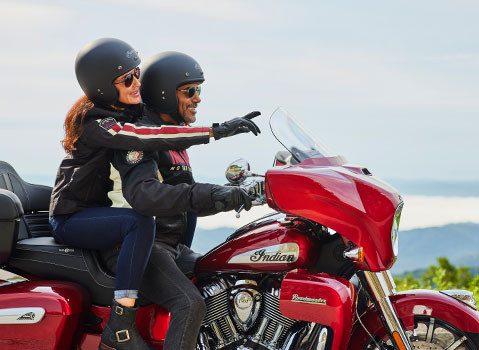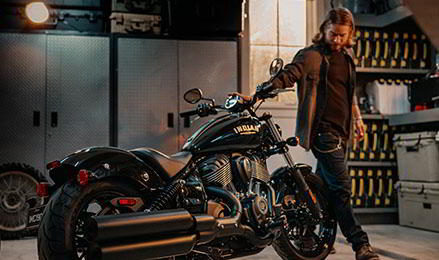
Motorcycle Detailing Guide
Detailing your bike regularly is essential for a few reasons. Beyond simply looking its best, keeping your motorcycle clean will help it perform better, retain resale value and provide you with the opportunity to notice potential mechanical issues before they become serious problems.
Professional detailers can have a bike in tip-top shape within a few hours, but if you're the DIY type, you'll want to plan on investing a full day—at least for your first couple of times. Find a shaded, level area with access to a garden hose and protection from the wind, then assemble your supplies:
Detailing Supplies
· Water bucket
· Microfiber towels
· Detailing brushes
· Wash mitt
· Clean, dry towel
· Bug and tar remover
· Wax and polish
· Wheel and tire cleaner
· Mild degreaser
· Windshield cleaner
· Leather cleaner
· Mild detailing spray
· Clay bar (optional)
Step-by-Step Guide to Cleaning a Motorcycle
After getting your supplies ready, you’ll want to protect any components that could be damaged by water. Plug the exhaust pipes, remove the battery and cover the display and gauges. Next, give your bike a thorough pre-wash to remove any surface grime and large debris, then gently wash with soapy water and your wash mitt. Hose off all the soap and dry your motorcycle right away to prevent water spots.
Never spray down your motorcycle when the seat is removed. Doing so can potentially damage sensitive wiring and electronic components.
Before cleaning your bike, make sure it's fully dry. If equipped, remove the seat, trunk, bags and windshield per your manual for easier access while detailing.
With prep work complete, it’s time to start detailing your bike. Keep in mind that matte paint requires a different cleaning process—check out the “How To Detail Matte Paint” section below if your motorcycle has any matte finishes.
-
Clean off bugs and tar
Apply bug and tar remover, let it sit for a few minutes, then wipe clean with a microfiber towel. -
Use motorcycle windshield cleaner
Remove dirt, water spots and scratches with a cleaner that’s safe for your windshield material. -
Clean dash and controls
Carefully wipe dash with a gentle cleaner and microfiber towel, dry immediately, then apply a UV protectant. -
Detail engine
Clean the engine, transmission and driveshaft housing using a mild degreaser and a brush. -
Wash wheels and tires
Apply wheel and tire cleaner, let it work for a few minutes, then remove excess product and debris with a microfiber towel.
-
Detail your seat
Treat your seat with leather cleaner, then apply a leather protectant to hide scratches and prevent sun damage. -
Use a clay bar (optional)
After applying a mild detailing spray for lubrication, use a clay bar to remove imperfections from your paint job. -
Polish chrome
Using moderate pressure and circular motions, apply a small amount of polish with a microfiber towel. -
Wax and seal
Apply wax to paint and chrome surfaces, and a sealant to non-painted surfaces— protecting your hard work from the elements. -
Protect your handiwork
Whether you store your motorcycle in the driveway or the garage, a bike cover keeps it clean and dry between rides.
vesgs

Detail Your Motorcycle Like a Pro
Detailing isn’t for everyone, but for those with patience, precision and a keen eye for detail, it can be a deeply satisfying, almost meditative experience. Are you wanting to go the extra mile when it comes to detailing your bike? Look no further—with these tips, you'll be detailing like a pro in no time.

Motorcycle Chain Cleaning
If your bike has a chain (like the FTR), keeping it clean is an essential part of regular maintenance that helps to prolong its life and ensure optimal performance. Here's how:
- Before getting started, put your bike in neutral.
- Put your motorcycle on its center stand or use a paddock stand to lift the rear wheel off the ground.
- Use a chain cleaning tool or a stiff brush to remove any loose debris, dirt or grime from the chain and sprockets.
- Apply a specialized chain cleaner to the chain, spraying it evenly along the full length and allowing it to soak for a few minutes.
- Wipe off excess chain cleaner with a clean rag or towel.
- Finally, apply a chain-specific lubricant to protect against corrosion and wear.
Never use degreaser or water to clean your chain. Doing so may cause damage and premature wear.
Detailing With a Clay Bar
Using a clay bar on a motorcycle's gloss paint is a great way to remove any stubborn dirt or grime—like tree sap or brake dust—that can't be removed with a simple wash. Here's how to use a clay bar on your bike:
- Wash your motorcycle thoroughly with soap and water to remove any loose dirt or debris.
- Spray a clay bar lubricant on a small section of the motorcycle, making sure the section you choose is small enough to complete the entire process without the clay bar drying out.
- Rub the clay bar gently over the lubricated section of the motorcycle using a light touch to avoid scratching the surface.
- As you work, you'll notice the clay bar picking up dirt and grime. Fold the clay bar over frequently to expose a clean surface.
- When you're finished with a section, wipe it down with a microfiber towel to remove any excess lubricant or residue.
- Repeat the process on the rest of the motorcycle, working in small sections until you've covered the entire surface.
Incorporating a clay bar into your detailing process will leave your motorcycle's finish smooth and free of contaminants, which can help to protect the paint and keep it looking its best.
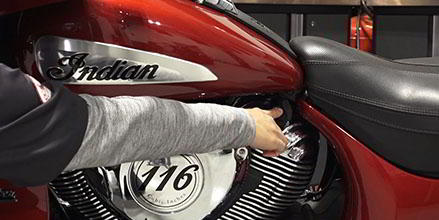
How To Clean Your Motorcycle Engine the Right Way
Restoring a motorcycle engine to its factory shine can be a time-intensive process that requires a lot of elbow grease—which is why many professional detailers swear by engine brightener.
Engine brightener is a cleaning product that’s designed to restore the appearance of a motorcycle's engine by removing dirt, grime and other contaminants. Some engine brighteners also contain UV inhibitors that help protect the engine surfaces from fading or discoloration caused by exposure to sunlight.
When using an engine brightener on your bike, it’s important to follow the packaging instructions carefully and use the product as directed. You’ll also want to make sure to choose a product that’s specifically designed for motorcycle engines to ensure it won’t cause any damage to your engine or its components.

How To Detail Matte Paint
Unlike gloss, matte and suede paint has a flat finish, which makes it more susceptible to imperfections like scratches and swirls. Detailing a bike with a matte or suede paint job requires a delicate touch and the use of products that are designed specifically for matte finishes. Here are a few things to keep in mind:
Washing
Use a mild dish-washing detergent and a soft sponge, then rinse with clean, warm water. For stubborn stains, such as grease or oil, use a citrus-based cleaner. Never use pressure washers, harsh chemicals or abrasive sponges, as they can scratch surfaces and damage paint.
Drying
Use a soft, clean and dry microfiber towel. Avoid using a chamois or abrasive materials, as they can cause scratches and swirls in matte paint.
Polishing
Avoid traditional abrasive polishing compounds, as they can remove the matte finish—leaving behind glossy spots. Instead, use a matte-specific detailing spray or finish enhancer.
Waxing
Matte paint should never be waxed, as wax contains polymers and oils that can create a glossy shine. Use a matte-specific sealant or protectant instead.
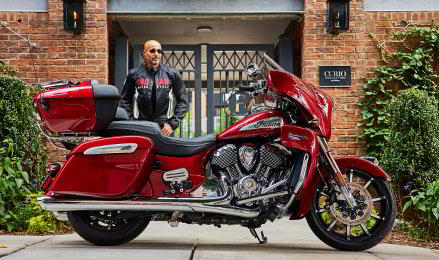
Ready, Set, Shine
Detailing your motorcycle is an essential task that helps to improve its appearance, extend its lifespan and retain its resale value. Remember to always use the right cleaning products and techniques, pay attention to the details and take your time to get the job done right. With a little effort and dedication, you can keep your motorcycle looking like new for years to come.







